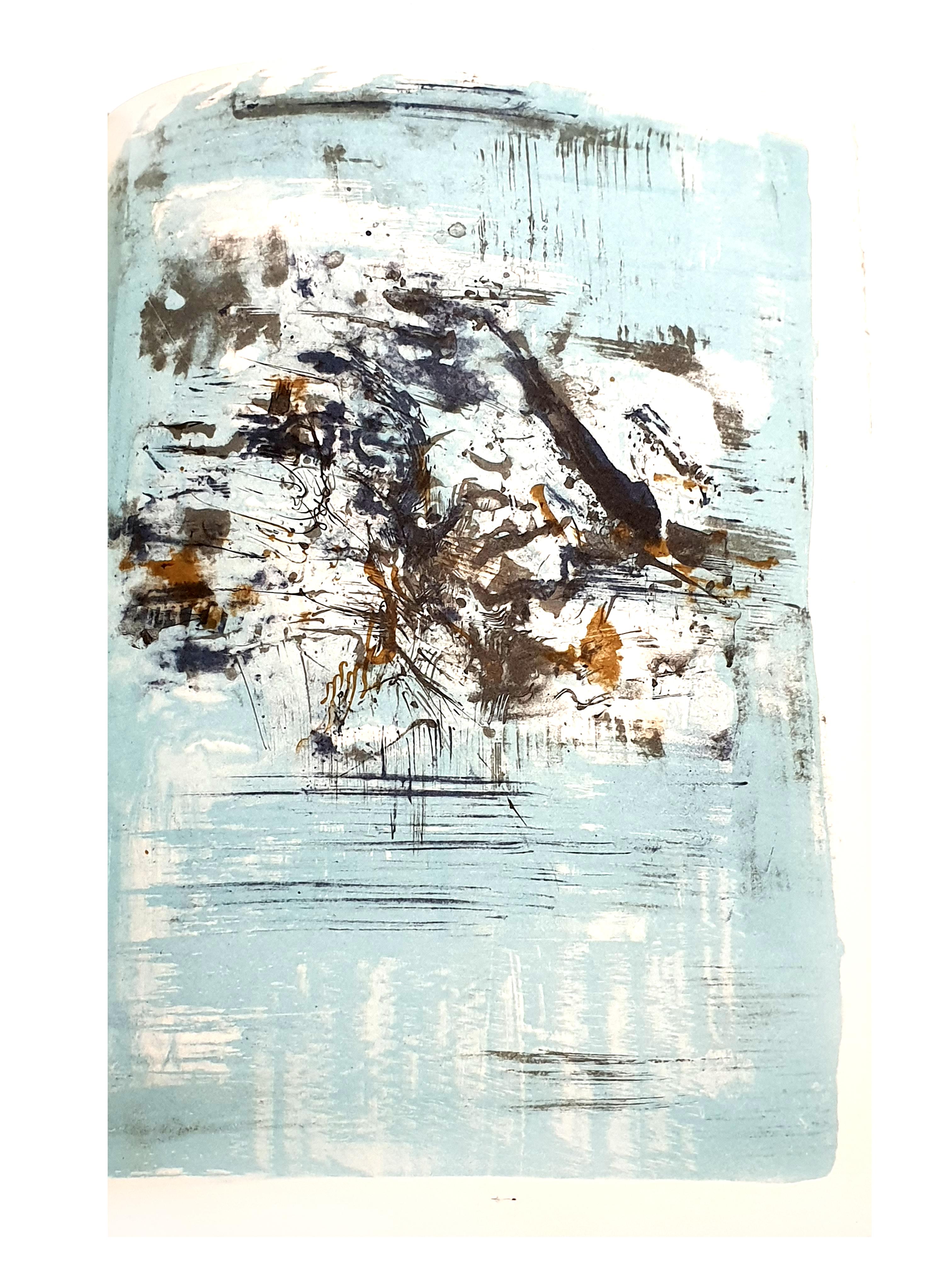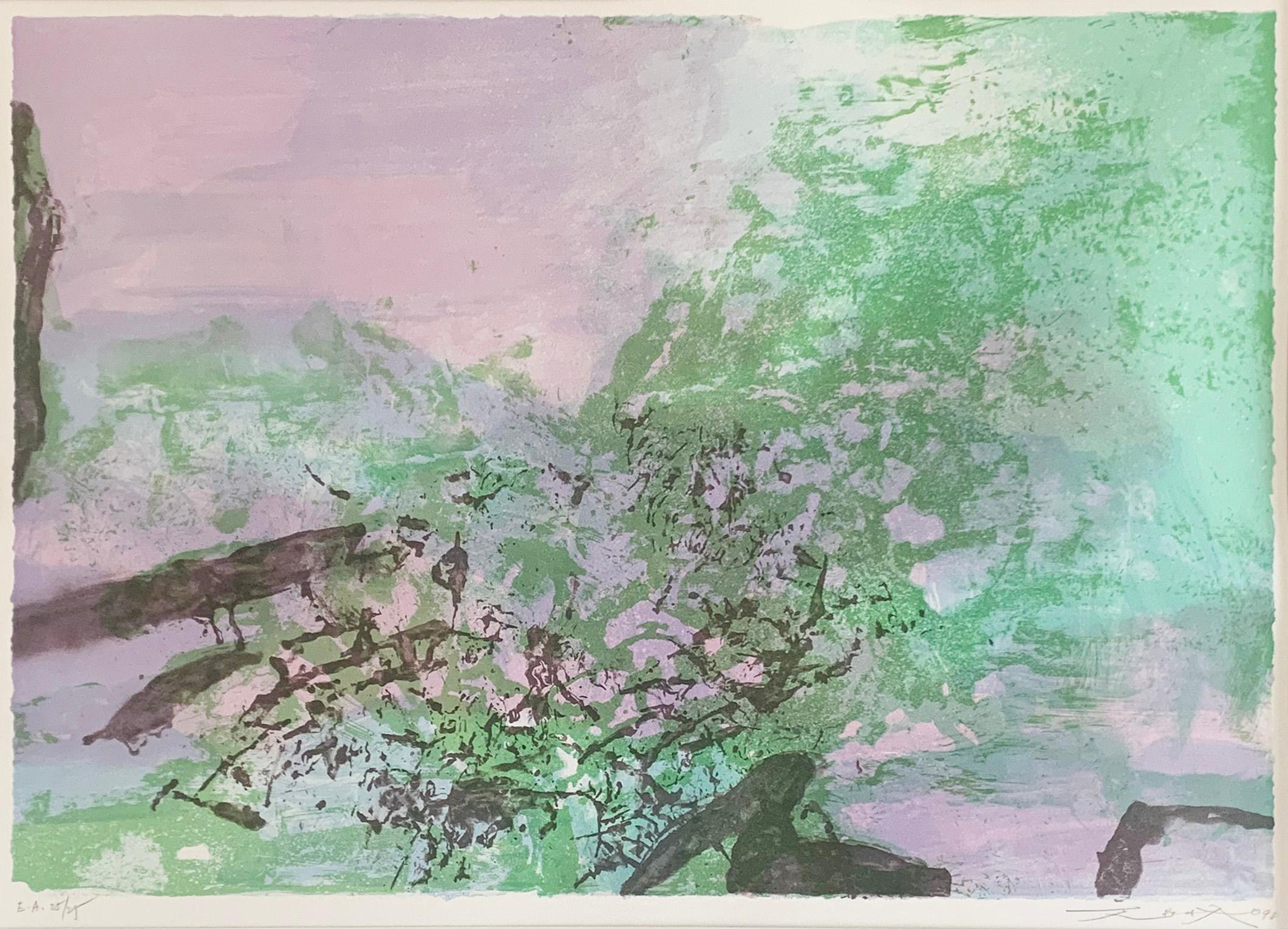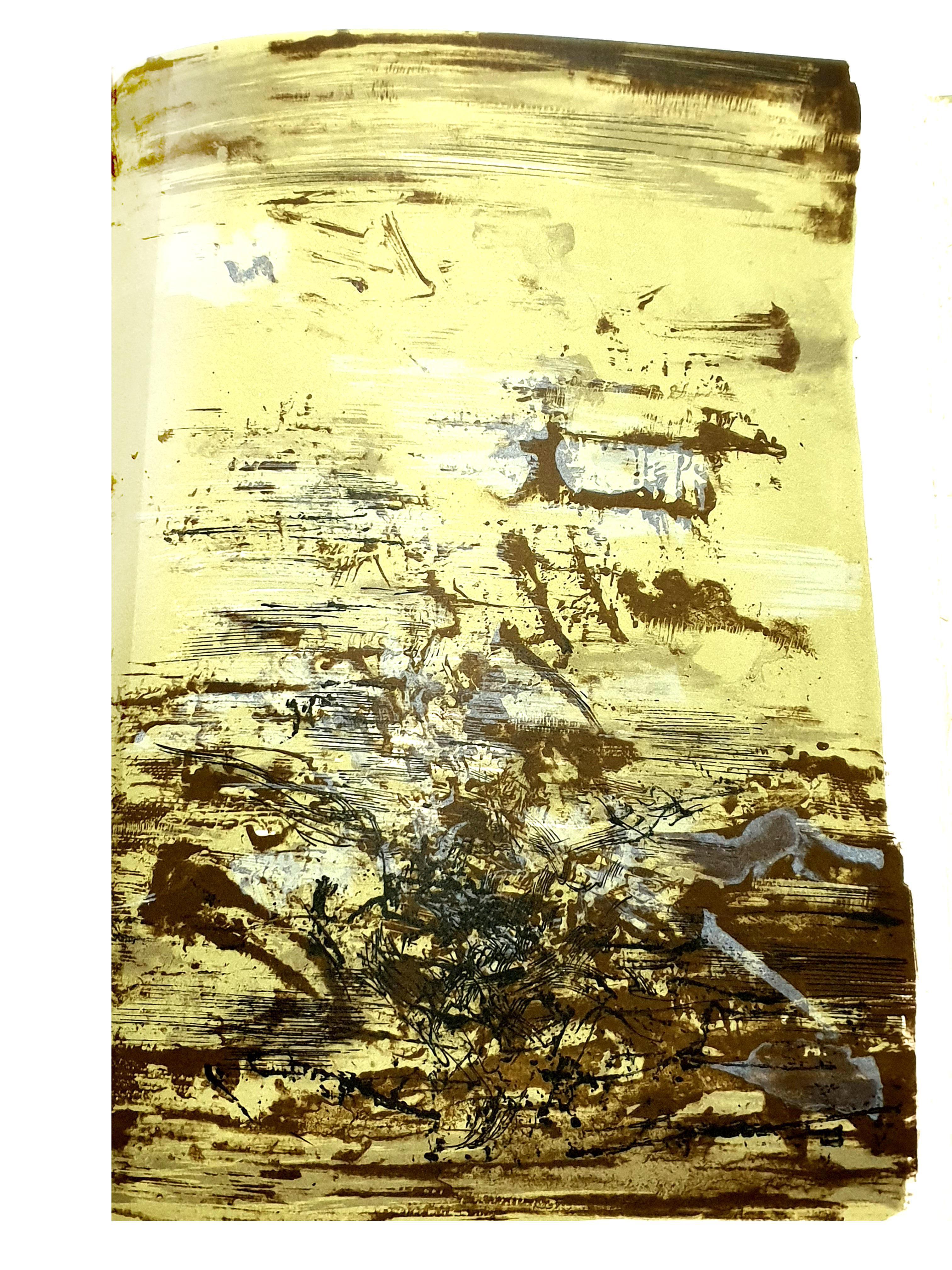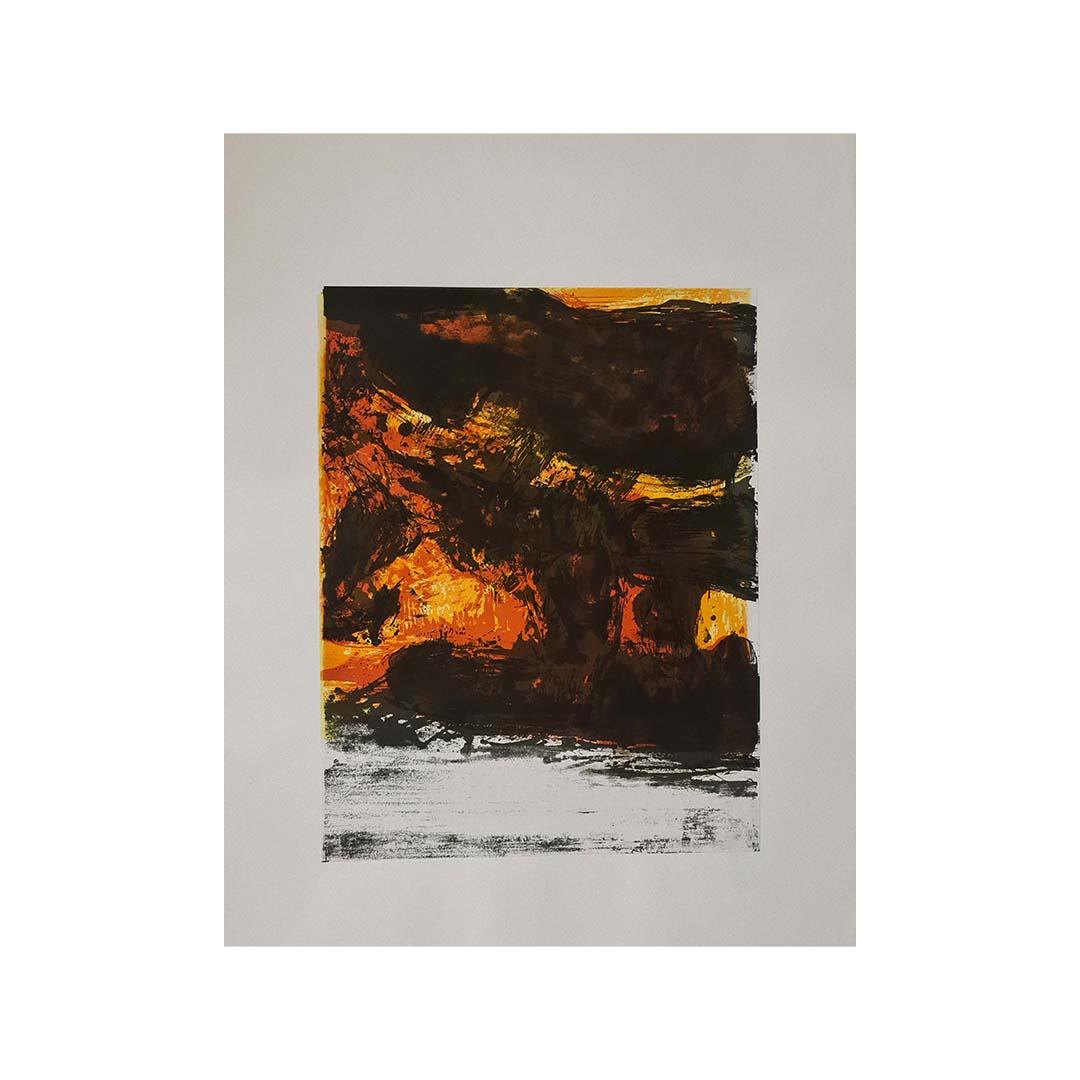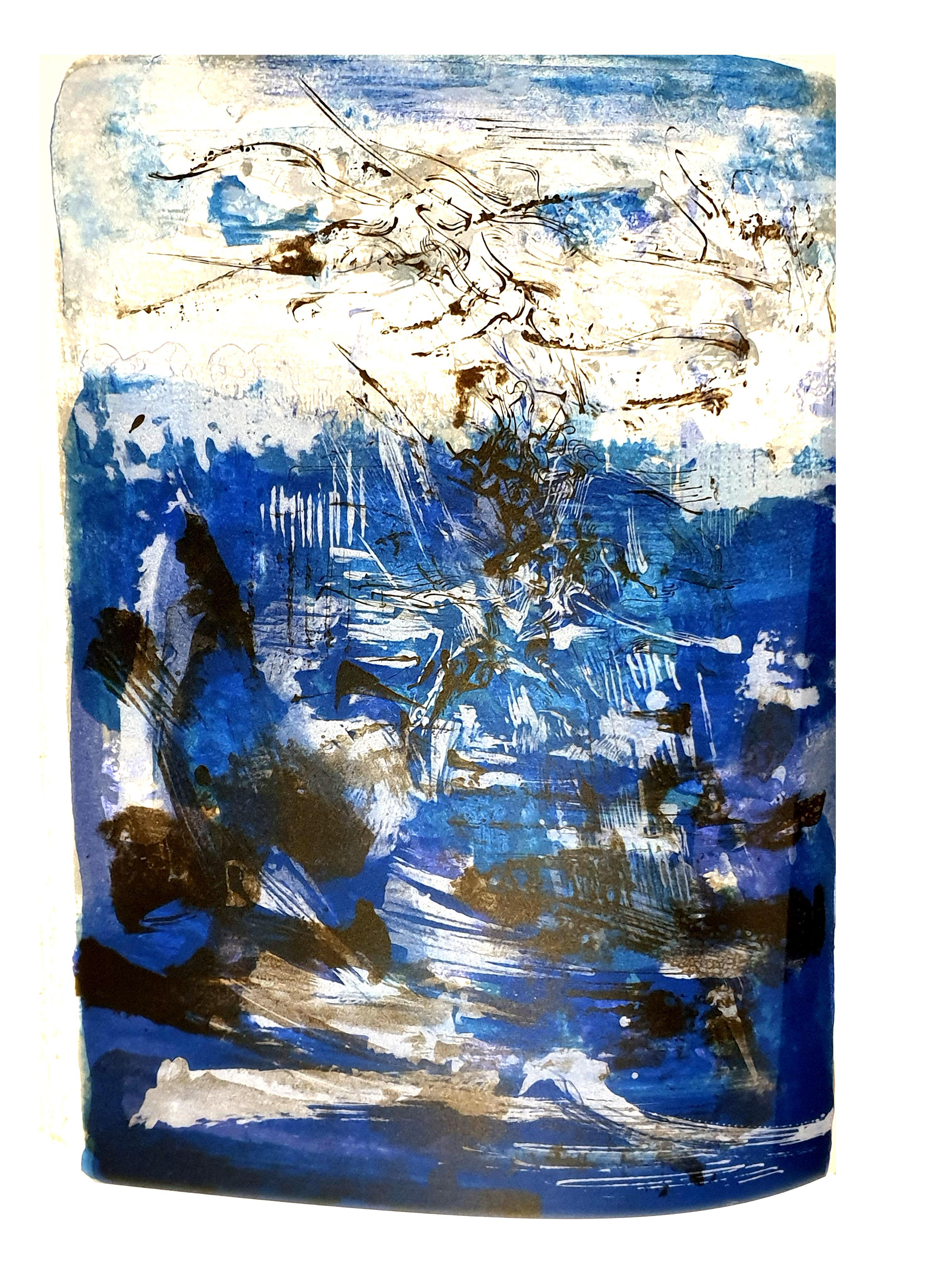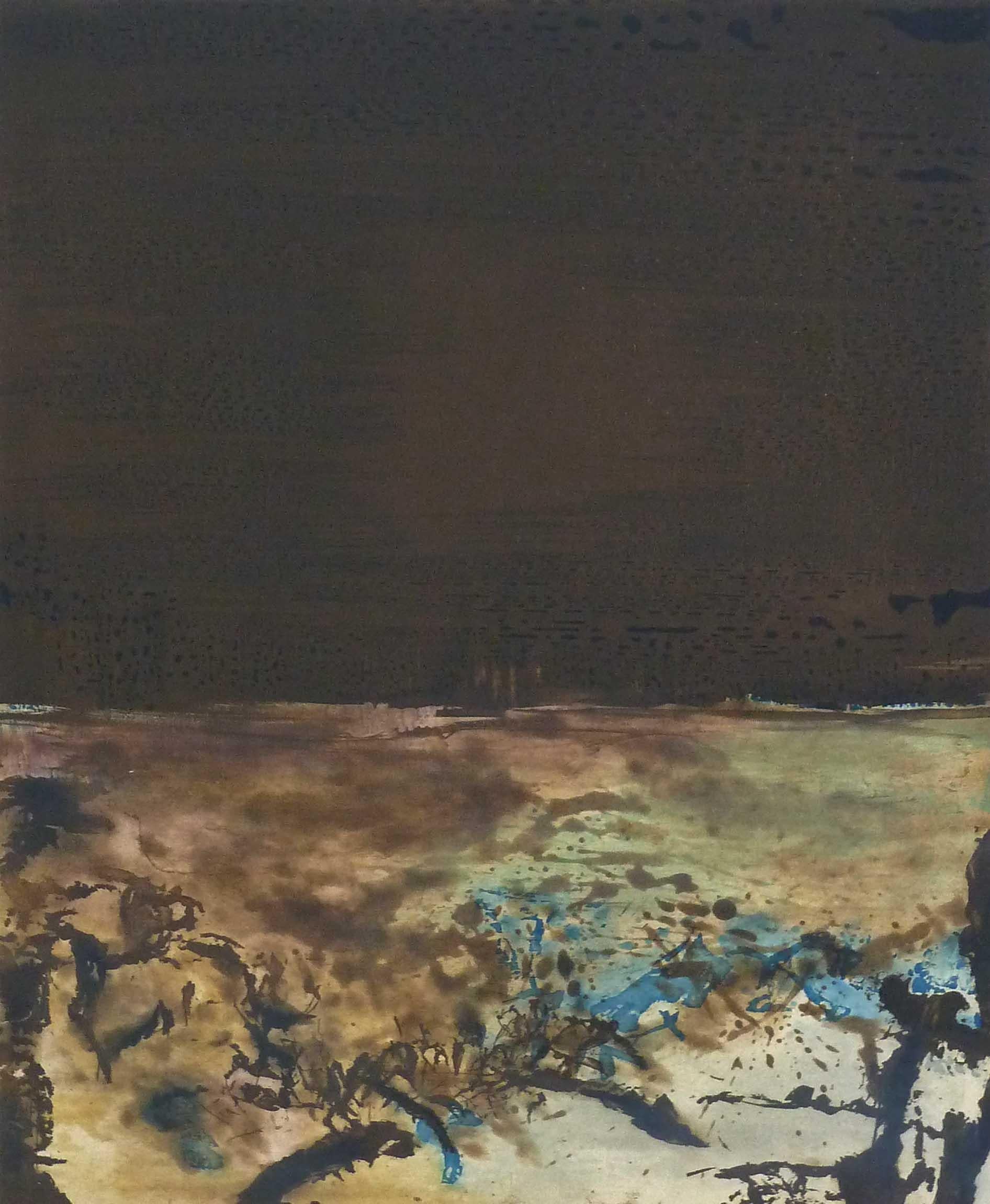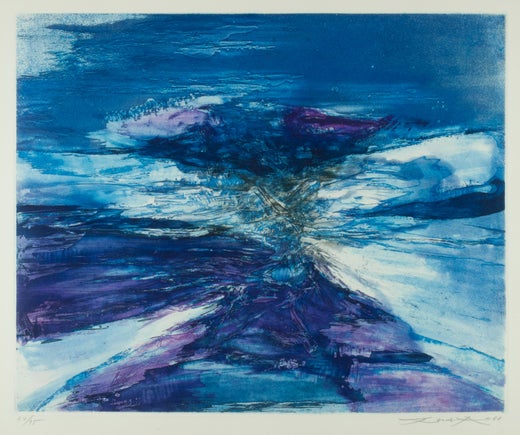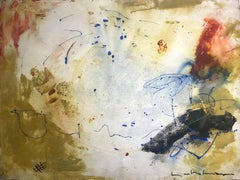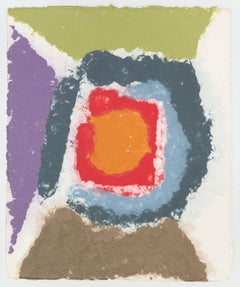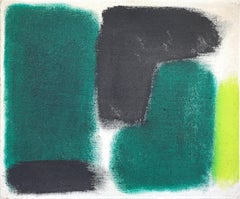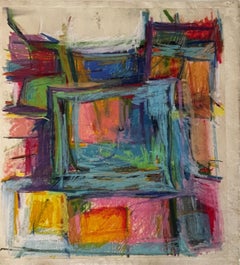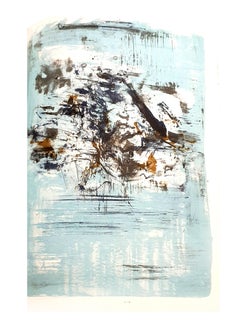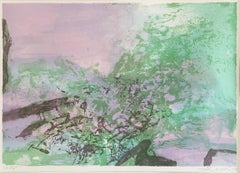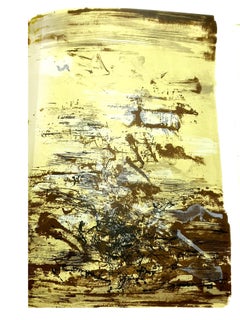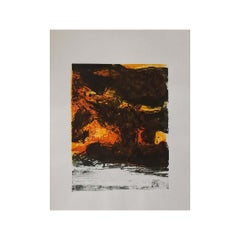Zao Wou-Ki"Hommage a Nobutaka Shikanai, " Zao Wou-Ki, Abstract Lithograph Mid-century Print1991
1991
About the Item
- Creator:Zao Wou-Ki (1921, Chinese)
- Creation Year:1991
- Dimensions:Height: 31 in (78.74 cm)Width: 23.5 in (59.69 cm)
- Medium:
- Movement & Style:
- Period:
- Condition:
- Gallery Location:New York, NY
- Reference Number:1stDibs: LU184129905442
Zao Wou-Ki
Zao Wou-Ki was born in Beijing, China, on February 13, 1921, to a wealthy family descended from the Song Dynasty.
French-educated Chinese artist Lin Fengmian was Wou-Ki’s teacher at the China Academy of Art from 1935–41 and encouraged him to study abroad in Paris. Wou-Ki made the move in 1948 with a substantial amount of financial backing and later adopted France as his new home, remaining in the country, besides a few short trips abroad, until his death.
In Paris, Wou-Ki quickly joined a large postwar French art circle, composed of key writers, poets, painters and cultural figures, including Joan Miró, Pablo Picasso, Riopelle and Vieira da Silva, among others. This networking helped position himself at the top of the Lyrical Abstraction movement. By his mid-30s, Wou-Ki had decided to devote his artistic career to abstract painting that blended Eastern and Western stylistic traditions.
In 2011, Wou-Ki was referred to in art publications as the top-selling living Chinese artist. He died in Nyon, Switzerland, on April 9, 2013, at the age of 93.
Find authentic Zao Wou-Ki prints and other art on 1stDibs.
- ShippingRetrieving quote...Shipping from: New York, NY
- Return Policy
More From This Seller
View All1940s Abstract Expressionist Abstract Drawings and Watercolors
Paper, Oil, Watercolor
1980s Color-Field Abstract Prints
Paper, Monotype
1960s Abstract Expressionist Abstract Paintings
Canvas, Oil
1960s Abstract Expressionist Abstract Drawings and Watercolors
Paper, Pastel, Gouache
1960s Abstract Expressionist Abstract Drawings and Watercolors
Paper, Pastel
1980s Abstract Mixed Media
Fabric, Paper, Mixed Media, Laid Paper
You May Also Like
1960s Abstract Expressionist Abstract Prints
Lithograph
20th Century Abstract Expressionist Abstract Prints
Lithograph
1960s Abstract Expressionist Abstract Prints
Lithograph
1970s Prints and Multiples
Lithograph, Paper
1960s Abstract Expressionist Abstract Prints
Lithograph
1980s Abstract Abstract Prints
Etching, Aquatint
